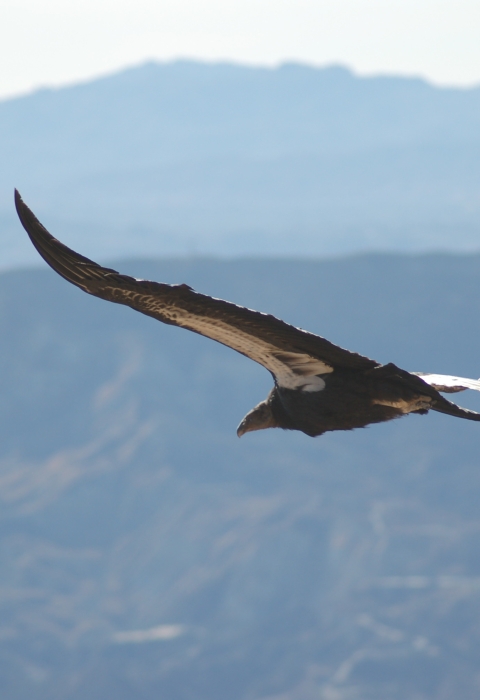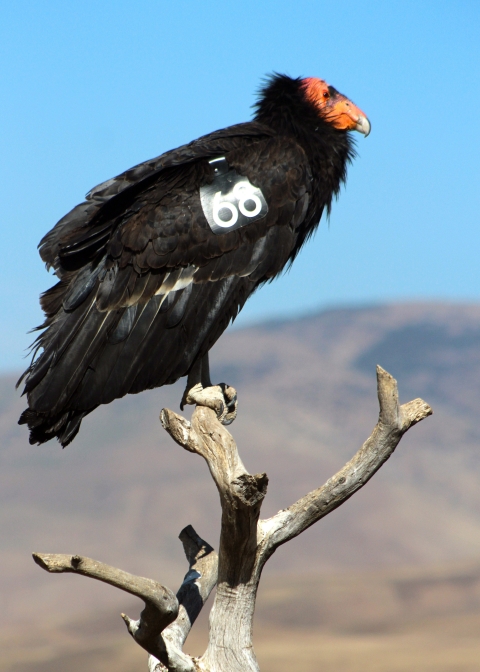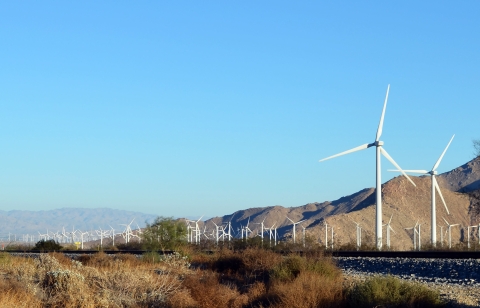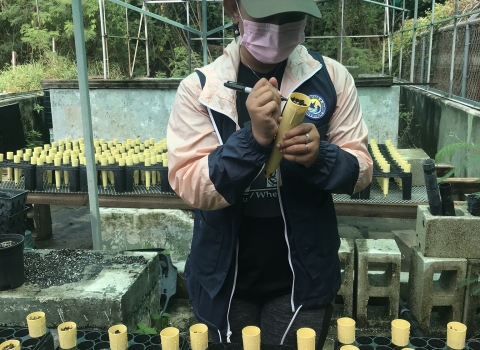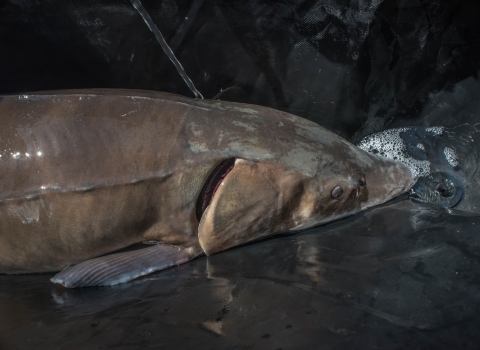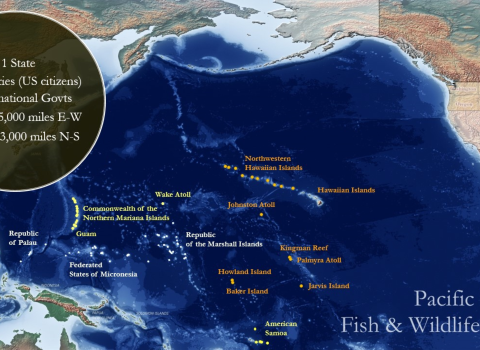Situated along the foothills of the Sierra Nevada and Tehachapi mountains in California, the Tehachapi Wind Resource Area is the largest producer of wind power in the state. Along with all those turbines comes the risk of avian mortalities, including the potential loss of endangered California condors.
Staff and managers at the Palm Springs Fish and Wildlife Office reached out to the companies operating in the Tehachapi Wind Resource Area, to find a path forward to address potential incidental take of condors while providing the operators with regulatory certainty. Under section 10 of the Endangered Species Act non-federal landowners can receive a permit to take a threatened or endangered species while conducting otherwise lawful activities.
The first company to move forward with an incidental take permit request for California condors was Avangrid Renewables, which operates the Manzana Wind Power project. The FWS and Avangrid put a lot of effort into designing the risk minimization and mitigation programs, the development of a population viability analysis with a team of researchers to inform the amount of mitigation needed. In 2021, the FWS issued an incidental take permit for Avangrid’s Manzana Wind Power Project, covering the take of up to two free-flying California condors and two associated eggs or chicks over the 30-year permit term. The mitigation program included funding for a full-time employee at the Oregon Zoo for the captive rearing of six additional condors for release into the wild to offset the permitted take over the 30 years; and monitoring to ensure plan compliance over the life of the permit.
The mitigation funding provided by Avangrid supported the Oregon Zoo’s captive breeding program in producing a total of 10 additional condors for release into the wild in 2022 and 2023 and another 2 juvenile birds that will likely be at a releasable stage this coming fall. Assuming the number of condor mortalities at the project remains at (or below) the permitted amount over the next 27 years then the anticipated take has been fully offset; and the additional six captive reared birds are a net conservation benefit for condors above the mitigation requirement. A May 1, 2024, news release celebrates the successful partnership.
“We are really pleased that all has gone to plan, and we appreciate everyone working on condor recovery that contributed to this effort,” said Peter Sanzenbacher, a biologist with the Palm Springs FWO and one of the leads for the permit process for the Manzana Wind Power project.
To date, there are no reports of condors killed at the Manzana Wind Power project (or any other wind project). The risk minimization program also continues to go according to plan. In 2023, the carcass management system reported one dead sheep in the permit area that was removed promptly by the rancher to avoid the risk of condors feeding in proximity to turbines. Additionally, use of technology to establish a geofence along with a field observer detected a number of condors in the vicinity of the project, resulting in curtailment events when wind turbines were essentially stopped for a short time to reduce/eliminate the risk of a condor colliding with an operational turbine.
Now that Avangrid has completed their mitigation, the Los Angeles Department of Water and Power has taken up funding of the full-time employee at the Oregon Zoo to assist with the condor captive breeding program for the next 3 years as mitigation for the condor incidental take permit that was issued to them in November 2023, for the operation of their Pine Tree Wind Farm.
Developing the mitigation strategy took time and effort; however, the extensive internal and external outreach and trust-building, including support from Kern County, resulted in a scientifically sound analysis of project impacts and appropriate mitigation. Building on this foundation for the Manzana Wind Power project, the Service also issued a condor incidental take permit in June 2023 to the 24 wind energy companies comprising the Wind Energy Condor Action Team (WECAT), further helping FWS shape a comprehensive plan for ensuring long-term conservation of condors is compatible with wind energy in the Tehachapi Wind Resource Area.
